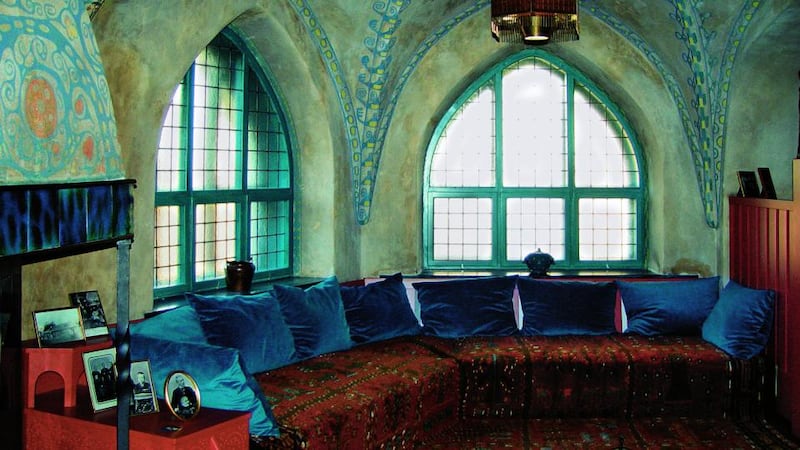One of the attractions of reading the property pages is the opportunity it gives us, even those of us not house hunting, to have a snoop around other people’s homes. So the lure of a large coffee-table style book, published by Taschen, that giant of coffee-table books, looking into the houses across Europe that architects created for themselves to live in, is obvious.
For those wanting a little voyeuristic property porn, a warning: this book started life as a project of the Polytechnic of Milan, and the introduction bears the subtitle “domestic interiors and cultural praxis”. But don’t let that put you off completely, for there is a lot to be discovered within.
Architects care passionately about their houses, even if, for many of them their own homes are on-going projects, never quite completed. That passion, if you remember, was the premise of the appalling 1993 film Indecent Proposal , in which architect Woody Harrelson is so keen to build his dream home, to live in with his estate agent wife, Demi Moore, that the couple agree: accepting $1 million from Robert Redford's character for a night of lust with Moore is the best solution to getting it built. Yes, sex and houses really can be equated.

Sordid tales do not feature in The Architect's Home , though we do learn that, by and large, modern architects prefer flat roofs, are keen to do away with bannisters on staircases where possible, and simply adore bare concrete and plate glass.
The house that the extravagantly named Francisco de Asís Cabrero Torres-Quevedo built in Madrid is a prime example, as is Kjell Lund’s house in Oslo, and Nicos Valsamakis’ in Athens.
After these, it's almost a relief to step back further in time to the Art Nouveau spaces that Gesellius, Lindgren and Sarrinen designed for themselves in Kirkkonummi Finland; and the wonderfully ornate 1898 Victor Horta House in Brussels with its rich wood, tiling and sinuously curving brass.
It's difficult to get a true sense of a space from images alone. Photographers are looking for the drama of light and shade, sexy perspectives, and tend to prefer to photograph rooms bare of clutter. People, on the other hand, even the most stylish, crave comfort. The house Irish architect Sam Stephenson built for himself, at 31 Leeson Close in Dublin, may photograph like a James Bond Villain's pad, but it's actually a very relaxing house to be in (you can find out for yourself, as it's now run as a guesthouse, see number31.ie).
Iconic building
Number 31 doesn't feature in the book, though Michael Scott's house Geragh in Sandycove does, as does Irish architect Eileen Grey's E.1027, which she designed with Jean Badovici in France. Another iconic building in France is Le Corbusier's home in Paris. Le Corbusier, whose real name was Charles-Edouard Jenneret, famously described houses as "machines for living", and having looked at the exciting spaces with vaulted ceilings and cosy enclaves, that he built for himself at 24 Rue Nungesser et Coli (flat roof, no bannisters), I began to wish the book also included some images of other spaces each architect had designed. Thinking of the Unité d'Habitation at Firminy-Vert, built in 1965, near Lyon, Le Corbusier, demonstrably had different ideas about how others should live, when compared with what he needed for his own comfort.
An architect who seems to eschew all sense of comfort completely is Werner Sobek. His house in Stuttgart is entirely transparent, with vertigo-inducing empty spaces between floors. Apart from the toilets, there are no partitions or curtains, and it's a house I would love to visit, but am pretty sure I'd loathe to live in.
More welcoming in appearance is the Straw House in London, built by Jeremy Till and his partner Sarah Wigglesworth. It is a fascinating construction of straw, sandbags, corrugated plastic and gabions of rubble. Interior shots prove, though, that however experimental the materials, we still need relatively 'regular kitchens, spaces to sit, eat, and somewhere to sleep.
Till has written on architects’ terror of time: the idea that for some architects, a building is perfect only at the moment of completion, empty of objects and people; while for those of us (ie everyone) who live in their efforts, a house only starts to come alive as we populate it with ourselves, our possessions and our memories. There isn’t quite enough of the latter in this book, though plenty of practical and factual information will fascinate followers of architecture.
The Architect's Home
by Gennaro Postiglione is out now on Taschen, €29.99










